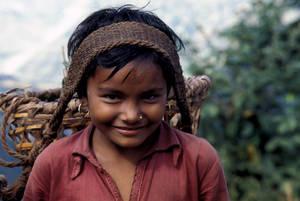
FAO and the International Labour Organisation (ILO) are reaching out to agricultural professionals to raise awareness about the importance of child labour issues.
The two agencies launched a new e-learning course designed for use by agricultural policymakers, programme designers and implementers, researchers and statisticians, to ensure that child labour prevention measures are included in agricultural and rural development programmes, in particular those targeting poor smallholders. The course covers all sectors: crops, livestock, forestry, and fisheries and aquaculture.
Globally, nearly 60 percent of all child labourers -- almost 100 million girls and boys -- work in agriculture. The worst forms of child labour include hazardous work that can harm their health and safety.
The agencies launched the course ahead of the UN's World Day Against Child Labour, to be celebrated on 12 June.
Towards zero child labour
"To achieve zero hunger, we must also achieve zero child labour," said FAO Director-General José Graziano da Silva. "Child labour is certainly a complex issue, and it cannot be tackled alone. We need strong partnerships, where everyone brings expertise and resources to the table," he said in remarks made at an event in Rome marking the World Day Against Child Labour.
Agricultural policies and programmes have a unique role to play in addressing the root causes of child labour, according to Graziano da Silva, and should be combined with adequate education systems that meet the needs of children and youth in rural areas. Together with social protection, and decent work policies for rural youth and adults, "we have the basic ingredients needed to end child labour in agriculture," he added.
"Consumers rightly expect that the people who put food on their plates and clothes on their backs should not be child labourers or forced labourers," said ILO Director-General Guy Ryder in a statement read at the event on his behalf. "Rural children should expect to benefit from quality education and decent work opportunities in their communities."
"Our e-learning course sends a clear message that it is imperative to end child labour in agriculture. This tool will help to build the capacity of agricultural stakeholders as well as labour stakeholders - and others - to fully engage where they can best contribute," Ryder added.
What is child labour?
Not all participation by children in agriculture is defined as child labour. Some involvement can be good - helping them to acquire knowledge and develop skills that will benefit them in the future.
However, when children work too many hours or are engaged in dangerous tasks or work that is not appropriate for their age and harmful to their health or education, this is child labour, and must be eliminated.
Good agricultural practices, new technologies can help
The new FAO-ILO course addresses the need to implement labour-saving technologies to reduce demand for child labour as well as safer agricultural practices to reduce hazardous working conditions.
Something so simple as properly training oxen used to plough can make a difference. In some places, where oxen are not well-trained, children are harnessed in front of them as guides.
In many countries, children are commonly engaged in weeding. Technologies and practices that save time required for weeding - systems of rice intensification using row planting combined with mechanical weeders, for example -- can thus decrease the demand for child labour.
A new, energy-efficient fish-drying technology introduced in Africa, the FAO-Thiaroye oven, reduces exposure to harmful smoke, and requires less fuelwood, thereby reducing the demand for child labour for fuelwood collection.
The course was co-funded by the Government of the Netherlands. It is now available in English and will soon be available in French and Spanish.
Source: FAO
 FR
FR EN
EN AR
AR








